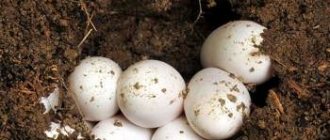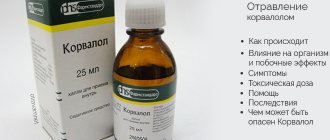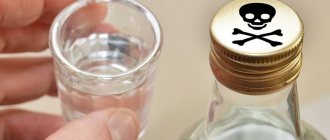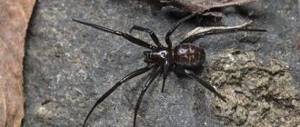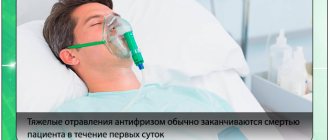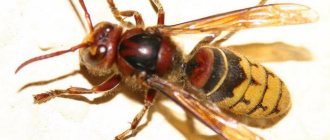Bites from viper snakes are not that uncommon in areas where they are common. The common viper, steppe viper and Pallas's copperhead live on the territory of Russia. Snakes bite people solely for self-defense. Most often this happens when a person is in a hurry and does not look at his feet, steps on a snake, or the viper does not have time to crawl away.
Viper has the ability to increase the permeability of the vascular wall (hemorrhages appear), causes blood clotting and tissue necrosis in the bite area. Deaths account for less than 1% of those bitten and are mainly associated with delayed first aid or incorrect use of the antidote for a viper bite. It is dangerous if the bite falls on the neck and head area, small children, elderly people or patients with chronic diseases are affected.
The antidote against a viper bite should be administered by a doctor, who will also prescribe symptomatic treatment depending on the degree of damage to the body.
What antidotes are there for a viper bite? Let's find out.
What happens when bitten
Considering whether a viper bite is dangerous for a person, we can say that the closer it is to the head, the more dangerous it is. At the site of the bite, 2 punctate wounds from poisonous teeth are observed. The injury immediately provokes severe pain.
In the spring, viper venom is more toxic than in summer. It contains neurotropic cytotoxins that have a negative effect on nerve cells. Other components of the poison provoke blood clotting disorders, as well as tissue necrosis.
A local reaction from the lesion is observed already in the first minutes. The bitten area turns red, the temperature rises, and swelling begins to spread. The general reaction usually begins to develop after a third of an hour, but can occur immediately. Clouding of consciousness is not typical for those bitten by a viper.
Precautionary measures
When walking through the forest, in a clearing, near a river, etc., do not forget that you are not in the city limits and are not walking on asphalt, but are in a forest area, where wild animals, ticks, and snakes can be encountered on every path . As we have already said, the viper does not attack first if it does not feel threatened.
To minimize the risk of a bite, you should follow these simple rules:
- look carefully at your feet when walking;
- wear high rubber boots and protective thick clothing;
- study the area where you are going;
- remember that snakes prefer old stumps and snags, in the summer they bask in the sun on stones, and during the mating season they can generally be found on trees;
- When you see a viper, freeze and do not make any sudden movements that could frighten the snake; if it does not crawl away, smoothly and carefully leave the meeting place.
The toxic effect leads to thickening and coagulation of the blood, which can subsequently result in anemia. Also, increased permeability of vascular walls is expressed in the appearance of hemorrhages, hemorrhagic edema and blood clots.
Some people may have problems with cardiovascular activity, kidney and liver function. It is impossible to predict how the human body will behave in case of intoxication, so you should not ignore the administration of the antidote and be sure to contact a medical institution for help.
Signs of a viper bite
The first signs and symptoms of a viper bite after an attack:
- At the site of the lesion, punctures appear that remain behind the teeth. There are no bruises, as the blood clots quite quickly.
- Some patients experience an allergic reaction, manifested in the form of swelling of the larynx and breathing problems.
- After a few minutes, the bite site turns red, a burning sensation and swelling appear.
- The victim becomes tired, weak, and dizzy.
- A third of an hour after the injury, blood pressure begins to drop, the heartbeat increases, and the skin turns pale. Some people experience nausea and vomiting and a fever. In some cases, seizures cannot be ruled out.
It is important to know that the consequence of a viper bite can be the death of body tissue cells.
What to do if you are far from the hospital
Situations are possible when an encounter with a snake occurs in a remote area, where there are no civilizations and the necessary help.
In this case, you need to take the following measures:
- To eliminate the toxic effects and remove poison from the body, you need to drink as much as possible. In this situation, water acts as a natural diuretic.
- You should always have antihistamines with you (Tavegil, Suprastin, Diphenhydramine). To prevent the occurrence of an allergic reaction, medication should be given before the administration of the serum and always in its absence. The dose is 1-2 tablets.
- Aspirin or any other similar drug is suitable as an antipyretic.
- The place of contact with the snake should be injected with 0.5% novocaine in three different places, and any non-narcotic analgesic drug is also suggested for pain relief.
- If blood pressure drops, Heptamil, Normexedrine, Dopamine or any other analogue is used.
If you know that you are going to the territory where vipers live, you should stock your first aid kit with the necessary medications in advance.
Symptoms after a viper bite in a child
If a baby is bitten by a viper, the following symptoms may occur:
- bite marks;
- complete powerlessness;
- severe pain that the child cannot tolerate;
- state of shock;
- redness of the injury site;
- bubbles may appear;
- formication;
- protrusion of sweat;
- a sharp rise in temperature;
- gradual appearance of swelling around the wound;
- lowering blood pressure;
- hands and feet may become cool;
- tissue death if help is not provided;
- fainting is possible when bitten by a large snake.
Even if the reactions are not pronounced, the baby still needs to be given competent help. A viper bite is more dangerous for a child than for an adult. In children, the poison begins to spread much faster in the body, which can cause unpleasant consequences.
Inadmissible events
What to do if bitten by a viper, and what not to do? In order to avoid harming the injured person instead of providing assistance, you need to know some rules:
- It is impossible to cut out the bite site, as a result of which an infection may occur and the muscles may be seriously damaged. This will cause heavy bleeding. A person can die not from poisoning, but from blood loss
- It is unacceptable to cauterize a wound in the form of a bite with any hot objects. The fact is that the viper, like most snakes, has long fangs; the poison that enters deep into the muscle tissue cannot be burned out. The situation will be aggravated by the formation of an extensive burn at the site of injury.
- In some cases, people try to “neutralize” the viper’s venom using sulfuric acid, caustic potassium, etc. Such actions will lead to extremely disappointing consequences
- It is not recommended to bandage a bitten limb (usually snakes rush to bite arms or legs). Rapidly growing swelling and tightly tightened tissue will impair blood circulation
- It is unacceptable to use a tourniquet to pull the limb just above the bite. This is a direct path to the development of gangrene, tissue death
- It is prohibited to give painkillers to the victim before the arrival of medical personnel, especially to administer this kind of injection into the wound area; do-it-yourself will not work in such a situation.
- It is mistakenly believed that alcoholic drinks will help the body quickly cope with intoxication from a viper bite. When alcohol enters the bloodstream, it only enhances the negative effects of the poison.
First aid provided to a person who has been bitten by a viper will prevent the development of unwanted symptoms, against the background of which extremely undesirable complications can develop. Reducing the risk of severe poisoning and taking urgent measures is the task of every modern person.
What determines the degree of danger of a bite?
Considering whether a viper bite is fatal for humans, it is worth saying that death occurs in only about 1% of those bitten. The degree of danger depends on several factors:
- Reptile size. The larger the snake, the more poison it contains, which, when bitten, enters the body.
- State of human health. If vascular and heart diseases are observed, shock and panic are possible, which contributes to the rapid spread of poison throughout the body.
- Height and weight of a person. The taller the person and the greater the body weight, the less harm.
- Bite zone. The most dangerous places of injury are the shoulders and neck. Bites to the extremities have less consequences.
If a viper has bitten a child, then you should not wait, but immediately consult a doctor.
Prevention
A healthy relationship with nature is the best defense against snake attacks. Vipers live in families, so when one individual appears, it can be assumed that up to a dozen snakes live in this place. Safety rules include wearing high shoes and closed clothing.
How to protect yourself from a snake in the forest? There is no need to stay overnight and put up a tent in potentially dangerous places, and if suspicious reptiles appear, you should not check whether they are aggressive. To avoid a viper bite, you need to freeze. Snakes do not like panic and, in defense, can rush at a person.
First aid to the victim
Typically, a black viper bite causes shock and panic. It is necessary to immediately provide first aid in case of a viper bite. It consists in:
- Carefully examine and determine whether there has been a repeat bite.
- Lay the victim down and ensure complete rest. It is very important to prevent the poison from being distributed throughout the body. The further outcome depends on how competently first aid is provided for a viper bite.
- If a snake bites your hand, then free it from all bracelets, rings, watches. In case of swelling and puffiness, it will be more difficult to remove the accessories in the future.
- Next, carefully begin to suck the poison out of the wound, spitting it out. It is imperative that the person who will suck out the poison must have a sufficient amount of saliva in his mouth. Or, before the event, fill your mouth with water to spit out the poison in full. Suck out the poison for a third of an hour. The helping person need not be afraid, since if the poison is spat out, it will not enter the body.
- The next step is to disinfect the wound. Any antiseptic preparations are suitable for treatment. You can use iodine or alcohol. Any alcoholic drink will also work if you don't have any medicine on hand. After disinfection, be sure to bandage your hand, but without squeezing the soft tissue.
Regardless of where the bite was received, be sure to drink plenty of fluids. It can be tea, milk, broth, compotes. Drinking plenty of fluids will help quickly remove toxins from the body.
Best before date
Serum against viper venom Microgen is stored for up to two years (the buyer must adhere to all requirements for storing the drug). After the expiration date, the serum cannot be used and is discarded. The product should be stored in a place inaccessible to children of any age. Pets are no exception. The drug can be transported only at a temperature of 2 – 8 o C.
When the whey is subjected to a single freeze, but when thawed it does not change its external properties, it can be used.
One cardboard package contains 5 ampoules. But it is sold in pharmacies without a prescription. The capacity of the ampoule depends on the specifics of the serum itself. But according to medical standards, one ampoule should contain no more than 3 ml.
Storage conditions
In a dry place, protected from light, at a temperature of 4–8 °C.
How to properly suck out venom
When considering what to do when bitten by a viper, it is necessary to suck out the released poison in time. It is especially important to begin an activity immediately if medical assistance is not available. In just 5 minutes it will be useless. Depending on the location of the bite, this can be done either by the victim himself or by a person nearby.
First, you will need to fold the skin around the injured area and squeeze to open the wounds. Suction with sharp and short movements. Spit out the bloody liquid immediately. Continue the procedure for 15-20 minutes, but stop at the first sign of swelling. This suggests that the poison has managed to be absorbed and it is no longer possible to remove it in this way.
Composition and form of serum against viper venom
The finished drug is packaged in transparent ampoules of 150 AE. In addition, a syringe is attached to it. Each ampoule contains an almost colorless injection liquid with a small addition of a yellow tint. Presence of sediment is excluded.
We recommend reading: Allergy to metals gold, silver and others: symptoms, treatment and other features
One cardboard package contains 5 ampoules. But it is sold in pharmacies without a prescription. The capacity of the ampoule depends on the specifics of the serum itself. But according to medical standards, one ampoule should contain no more than 3 ml.
Active substance:
- One therapeutic dose of antitoxin extracted from the blood of a horse.
Additional components (in percent):
- Phenol (25%);
- Sodium chloride (0.8%);
- Purified drinking water;
- Sodium hydroxide and hydrochloric acid in small doses to stabilize the pH.
Serum against viper venom will save your life during a trip to nature. If an incident occurs, you should immediately call an ambulance. Otherwise, any delay will lead to death. Now the drug can be ordered online or purchased at any pharmacy.
Is there an antidote?
Considering whether there is an antidote for a viper bite, then, undoubtedly, there are drugs in pharmacies, and the most famous antidote for a viper bite is “Anti-viper”. Half an hour after use, the product begins to remove all remaining poison from the body.
Even if the victim was not given serum for a viper bite for some reason, it is recommended to give a tablet of Suprastin or Diphenhydramine. This will relieve the allergic reaction.
Travel around Karelia
Common viper
The viper is a poisonous snake, but it is distinguished by its peace-loving nature, is afraid of humans and, when meeting them, always tries to crawl away and hide. She bites only accidentally or in a desperate situation, in defense, for example, if she is stepped on or carelessly grabbed with her hands, mistaking her for a snake.
The viper's bite is quite painful, but usually not fatal, and patients usually recover within 3-4 days. Over many decades in our country, only a few cases of death of people (mostly children) bitten by a viper are known, but even here the cause of death could not be the bite itself, but improper treatment. In Karelia, despite the frequent occurrence of vipers, there was not a single fatal case.
Viper venom has a local and general effect on humans. The local effect is expressed in the appearance of a tumor that gradually spreads to the entire bitten limb, severe pain, necrosis and destruction of tissue at the site of the bite. The general effect is weakness, dizziness, fainting or agitation, convulsions, vomiting, shortness of breath and weakening of cardiac activity. With timely and correct treatment, recovery occurs within a few days, although weakness is sometimes felt for another two to three months. In cases where harmful methods of self-medication are used, the disease can drag on for a long time and occur with severe complications.
Particular caution should be given to the use of numerous “home” remedies and outdated first aid methods, which, as medical practice has shown, are not only useless, but even dangerous to the life of the victim. It has long been believed that pulling a limb above the bite site localizes the poison, slowing down its entry into the general bloodstream and spread throughout the body.
However, special studies have shown that applying a tourniquet does not reduce the severity of intoxication, does not delay the spread of poison and inflammatory edema, but only disrupts blood circulation, impairs the nutrition of the tissues of the affected limb and causes their necrosis (decay) due to developing congestion.
Incisions at the site of the bite and bloodletting have an extremely harmful effect. They increase blood loss, injure the wound and contribute to its infection. It is also inappropriate to inject a two percent aqueous solution of potassium permanganate around the bite site (which is usually recommended for the purpose of neutralizing or local fixation of the poison), since this measure only contributes to the destruction of the normal anatomical structure of the soft tissues, and has no effect on the poison.
“Treating” snake bites by applying leaves, earth, saliva, cobwebs to the wound, lubricating it with kerosene, etc. is the result of ignorance. Such “help” can bring enormous harm to the victim, since the effect of the poison is not weakened, and tetanus bacteria, gas gangrene and other pathogenic microorganisms can enter the wound and cause serious illness.
All kinds of cauterizations are not only pointless, but also dangerous - with hot iron, coal from a fire, gunpowder, etc. They cause severe burns, increasing tissue breakdown and pain, and force the body, weakened by the snake’s venom, to spend energy fighting more one illness.
One should also have a sharply negative attitude towards such a “folk remedy” against snakebites as drinking alcoholic beverages. Alcohol dilates skin vessels, lowers blood pressure and only speeds up the absorption of poison. In addition, alcohol intoxication reduces the body's resistance, its ability to resist the effects of poison and interferes with the use of effective medications. Treating children with vodka is especially dangerous. It can lead to death much faster and more surely than a snake bite.
All these and many other measures recommended by “experienced people” can bring nothing but harm, and they should not be used under any circumstances. Modern medicine uses completely different, quite effective first aid and treatment techniques, which boil down to gentle therapy. After a viper bite, you should immediately begin sucking out the venom with your mouth or, if this is impossible for some reason (bleeding gums, damage to the oral mucosa, etc.), squeezing out the venom for 5-7 minutes. After this, you need to immobilize the bitten limb, fixing it with the help of immediately made splints, put the victim on a stretcher and take him to the hospital.
The victim of a snake bite is prescribed bed rest, plenty of hot drinks, heating pads are applied to the arms and legs, and medications that calm and support cardiac activity and breathing are administered. If there is severe pain, they resort to local novocaine blockade. In severe cases, jet-drip blood transfusion gives good results. But the most effective treatment is the subcutaneous injection of 20-30 ml of concentrated anti-snake serum. This is precisely this – competent first aid, prompt transfer to the hospital and qualified inpatient treatment – that is the key to recovery from a viper bite.
The common viper is a dangerous venomous snake. However, does this mean that it should be persecuted and exterminated in every possible way? Of course not. Firstly, as mentioned above, she herself never attacks a person and, when he approaches, tries to crawl away and hide. Therefore, the victim, as a rule, is himself to blame for what happened: he teased the snake, tried to catch it, etc. Secondly, the viper feeds on various small animals, many of which, in high numbers, pose a danger to the forest and even human health. Snakes reduce the number of these animals, prevent them from reproducing and serve as an important regulator of their population. Underestimation of this aspect of the importance of reptiles and their complete destruction can lead to a violation of the relationships that have developed in nature and cause much more harm, including rare cases of snake bites. In places where the number of vipers is high, it is advisable to reduce their numbers, but only to certain limits that exclude a real danger to people. And then these animals will turn from “insidious enemies of man” into his true friends and allies. Folk remedies for snake bites
It’s curious, but only to be used as a last resort. Here is another “exotic” recommendation from T. Dinova, this time intended to help those bitten by a snake. If a snake bites you, bandage your leg tightly above the wound and immediately look for frogs. Place its belly on the bite and hold it tightly, no matter how it twitches, in a few minutes the frog will die. Apply a second one and so on until the next frog remains alive. This will be a sign that the poison has been destroyed. Sometimes you have to use six or seven frogs, but the bite will heal quickly and without consequences. Since those bitten by snakes may have problems finding frogs, we decided to place here other, more accessible ways to eliminate the consequences of a bite. Here are two remedies borrowed from the “Russian Folk Medicine Book”: 1. Immediately after the bite, you should make a primitive tourniquet from a belt, rope, etc. and tightly bandage the arm or leg above the bitten area. Without paying any attention to the pain, cauterize the bitten area with a hot iron. Then treat the burn wound. Remove the tourniquet after 15 minutes. 2. A person bitten by a snake must suck everything out of the wound himself, often spitting out what has been sucked out of his mouth. This can only be done if the person bitten has no wounds in the mouth. And here is the recommendation of the Ukrainian healer Anatoly Bardi: after a snake bite, immediately suck out the blood from the wound (if there are no scratches on the lips or in the oral cavity) and spit it out. For three days, fresh yeast is applied to the bite site, changing it every hour. It’s even better if you apply crushed garlic to the wound, changing it every hour for fresh one.
See also help for tourists.
It is worth looking at the following material: Poisonous plants All about mosquitoes. Lifestyle, habitats, reproduction, mosquito control. How to fight mosquitoes and midges Beware of ticks Basic information about Karelia Viper in Karelia
Folk remedies
After first aid has been provided, you can begin treatment using folk remedies. The best recipes are:
- To prepare the antidote you will need 80 g of anise, 18 g of pepper, 5 g of aristolochia bark. Mix everything, boil in red wine and give the victim 40 g to drink.
- An excellent antidote is wine with garlic. You will need to drink a large amount of this medicine, which will completely remove all toxins from the body. No further treatment will be required.
- The seeds of clover, round aristolochia, and wild rue have an excellent effect. Give the prepared medicine to the victim with a small amount of butter.
- When bitten by a viper, apply crushed laurel leaves to the injured area. This will help relieve inflammation and itching.
- Apply steamed Veronica herb to the wound. At the same time, you can take a decoction of this herb internally. The plant actively fights the acute inflammatory process.
- When bitten by a viper, it is effective to apply ground hemp seeds to the wound. You can use the plant itself, but the effect will not be as pronounced.
- It is useful to drink an infusion of elecampane root with wine or use the same infusion with sour milk.
Be sure to consult a specialist before using any traditional medicine. This will help prevent unwanted consequences from damage.
Preventing Viper Bites
In most cases, you can prevent a black adder bite. To do this, just follow simple rules:
- do not touch any snakes;
- in places where vipers live, wear special clothes and shoes;
- never touch trees with hollows until a person is sure that it is completely safe;
- if there are lawns near the house, then try to trim them constantly;
- try to ensure that mice and rats do not appear in the courtyard of a private house;
- do not make sudden movements;
- do not approach the mammal closer than 2 m.
Most often, the viper warns of its presence with a hiss. If you don’t touch her, she will soon crawl away on her own.
Risk areas
Theoretically, any place where vipers are found could be a risk zone, but there are still some conditions under which such troubles occur most often. First of all, these are areas located near forests or marshy areas:
- Private households in cottage communities or villages.
- Summer children's camps.
- Gardening partnerships.
- Boarding houses and holiday homes.
- Tourist or hunting and fishing bases.
Therefore, if you stay or live in such places, you need to be very careful. Moreover, if vipers were previously observed in such places. When relaxing outdoors, when working in the garden, you need to be very careful. In personal plots, it is necessary to exclude the presence of dense thickets, weeds, uncut grass, places where branches or garbage are stored, that is, anything that can serve as a shelter for snakes.
As cold-blooded animals, vipers often like to bask on rotting compost heaps. Naturally, snakes can be found in nature on hiking trips, fishing, hunting, swimming on the beaches of “wild” reservoirs, picking mushrooms and berries. It must be taken into account that even within the same region, vipers can be rare in some areas, but very numerous in neighboring ones.

